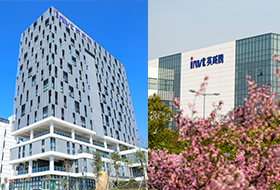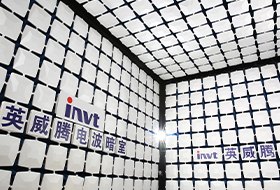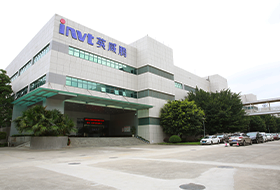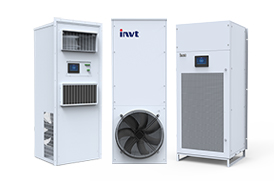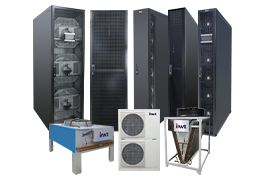Which cabling method should be used in the data center?
The main types of network cabling used in data centers include AC/DC power, ground, copper and fiber optic cables. So, you might be wondering how do we determine which type of wiring should be used? This needs to be determined by analyzing the interface type used in the data center equipment. The selection of the wiring type also depends on many factors such as the bandwidth requirements of the equipment used in the data center.
In this article, we'll discuss copper and fiber cabling in the data center, but before diving into this topic, let's first understand the cabling process.
What is Data Center Cabling?
The wiring process can be done in two ways: structured and unstructured.
In structured cabling; use a predefined standards-based design with predefined connection points and paths. This type of cabling is dictated by the bandwidth requirements of the system. Also, it is tested to ensure proper performance, in which case operating costs will be lower despite higher installation costs and the reliability of the system will be better compared to unstructured systems.
Unstructured cabling designs are also known as point-to-point. This type of cabling system does not use any predefined standards, connection points, or paths. In this case, airflow is usually restricted, thus causing cooling issues. Additionally, it results in higher energy costs. Unstructured systems are less costly to install and take less time to install, but post-operational costs are very high.
Should I Choose Copper Cable or Fiber Optic for Data Center Cabling?
Most of the time, these enterprises are more focused on the configuration of the adapters and switches used in the network, but another approach that is also very important for improving efficiency is to focus on better deployment of the data center. Because, just by working on the wiring architecture, the performance can be improved a lot.
Copper cable
Fiber optic cables don't have much electromagnetic interference because these cables transmit photons. In addition, fiber optic signals can be transmitted over longer distances. Due to the nature, it is believed that all types of networks must move to the latest technology, fiber optics, which means that the use of copper cables should be phased out. There is no doubt that fiber optic cables can provide faster communication over longer distances, but in data centers, copper cables are more suitable because of their many benefits. It reduces capex and opex and improves performance.
Next, let's explore the benefits of using copper cables compared to fiber optics:
Distance
Copper cables can cover shorter distances, and cable extensions usually depend on network speed requirements. However, copper cables are usually sufficient to provide a stable and reliable connection within the data center. Copper cables are capable of transferring data at the highest available bandwidth, whether providing connectivity between servers in individual racks or between switches in a cluster. Additionally, copper cables provide connectivity in a reliable and economical manner.
Reliability
With copper cables, reliability is one of the main advantages. Reliability is calculated in MTBF (mean time between failures), 50 million hours for passive copper cables. This number is higher compared to fiber optic cables. Industries that wish to avoid data center downtime should opt for copper cabling.
Optical fiber
Now that we understand copper and its benefits, let's focus on the reasons for choosing fiber:
Scope
Passive copper cables are often used to provide connections between equipment placed in a single rack (intra-rack connections). The distance covered by copper cables depends on the type of cable and the application, but is usually between 7-10 meters.
In contrast, active cables have electronics and optics embedded in connectors at both ends. Active optical cables not only cover longer distances, but also provide greater flexibility in data center configuration. Active optical cable technology can also serve both intra-rack and inter-rack applications.
Characteristic
Fiber optic cables are thinner and lighter than copper cables for the same data rate. In addition, fiber optic cables do not require shielding. This is why fiber optic cables are generally lighter in weight and smaller than copper cables. Additionally, it has a tighter bend radius than equivalent copper wire, especially with longer cables. Therefore, fiber provides greater flexibility for data center configurations.
The Evolving Data Industry
In today's world, data is growing at a very fast rate. These data are used in many applications such as drug discovery, traffic pattern management, vehicle model design, social media, overall safety. With the continuous increase of data applications, there is an urgent need for data to move quickly in the data center.
When planning the architecture of a data center, IT planners typically focus on the configuration of switches and network adapters. They often forget about the cabling infrastructure that plays a vital role in the performance and efficiency of the data center. A good cabling structure can also help businesses save money and operating expenses.
Why is it better to use a mix?
Few data centers rely exclusively on one type of cabling, be it fiber optic or copper. However, for businesses, the best solution is to rely on hybrid networks for better results.
By using fiber optic media converters that interconnect different cabling formats and extending copper-based Ethernet equipment over longer distances over multimode/single mode fiber (SMF/MMF) links, businesses can add a degree of redundancy to their networks. flexibility. Therefore, the best approach is to use both types of routing in the network design as required.

 networkpowersales@invt.com.cn
networkpowersales@invt.com.cn
